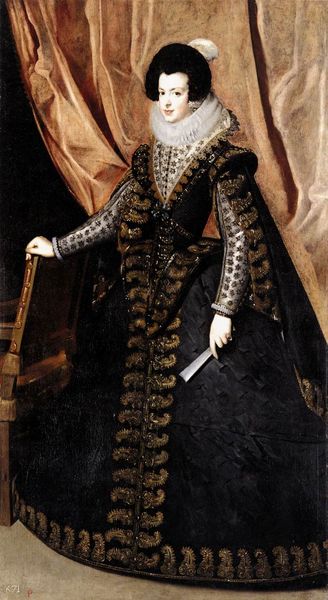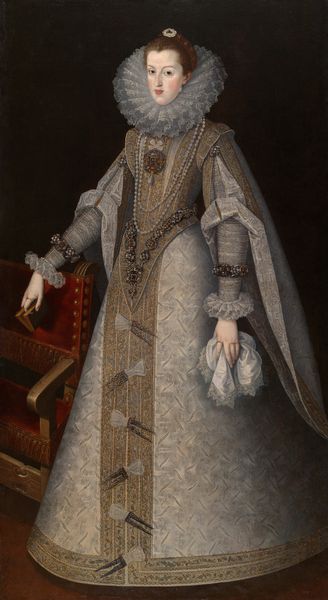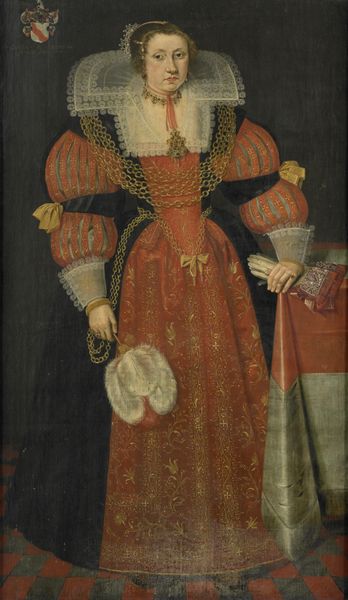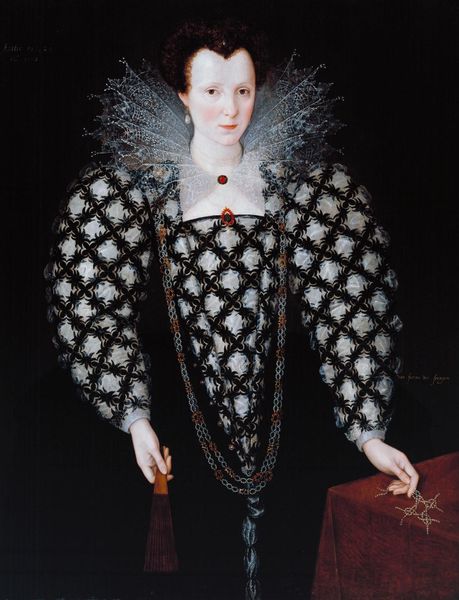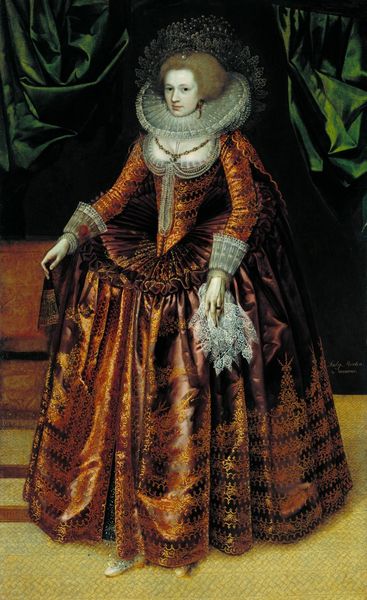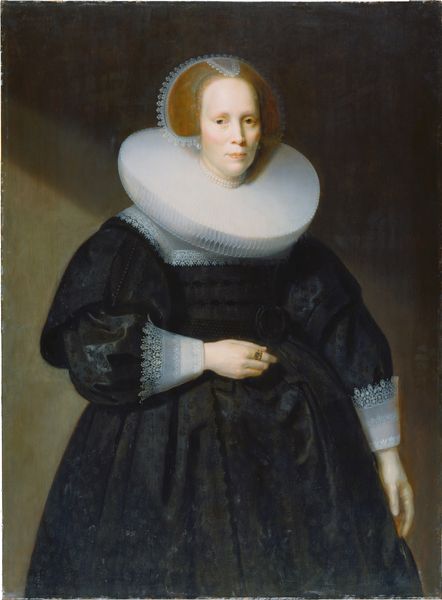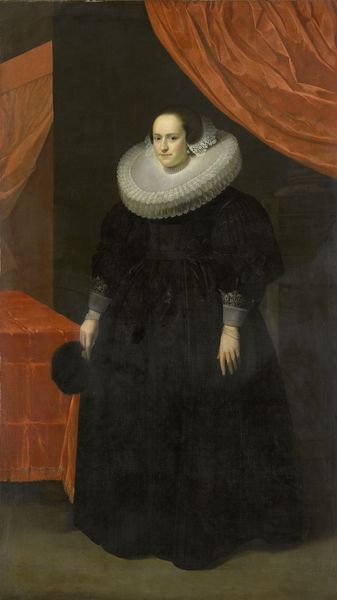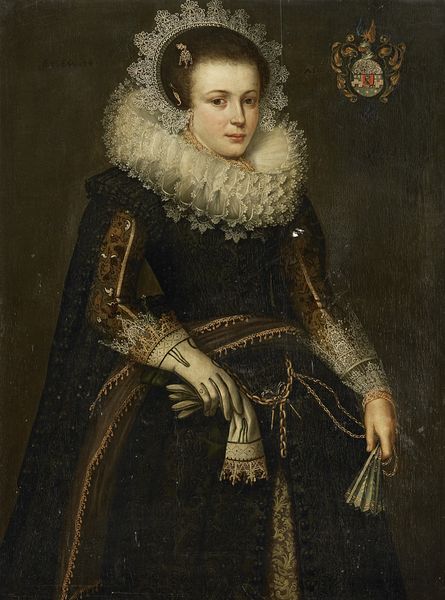
painting, oil-paint
#
portrait
#
figurative
#
character portrait
#
baroque
#
painting
#
oil-paint
#
portrait head and shoulder
#
underpainting
#
painting painterly
#
genre-painting
#
history-painting
Copyright: Public Domain: Artvee
Editor: Here we have Diego Velázquez’s portrait of Isabella of Bourbon, the first queen of King Phillip IV, painted sometime between 1613 and 1660. The painting, done in oil, has such an air of formality and…distance. What do you see in this piece? Curator: What immediately strikes me is the presentation of power and its inherent complexities. Velázquez was a master at embedding social commentary within his portraits. The rigid dress, the towering ruff – these aren't just fashion statements. How do you think these elements play into Isabella's role as Queen, a role dictated by a patriarchal structure? Editor: It feels like armor, almost. Implying that she had to present strength because her position was not easily held, she was vulnerable as a woman in power. Curator: Exactly! And what does it say about the expectations placed upon royal women in 17th century Spain? This isn't merely a representation of an individual; it's a carefully constructed performance of queenship, constrained by societal norms and expectations. Look at how her gaze barely meets ours. Where does her agency truly lie, trapped within the canvas of royal obligation? Do you think she would want to be perceived as cold? Editor: Perhaps she wasn't given a choice. Being royal was her identity and that overshadowed any potential of truly getting to know her or empathizing with her, even to this day. I learned to look beyond face value and into sociopolitical implications behind even court portraiture! Curator: Precisely. We've peeled back layers to reveal how art reflects and perpetuates existing power dynamics. Next time you look at any artwork, try and see where you situate the subject in their historical and social circumstances.
Comments
No comments
Be the first to comment and join the conversation on the ultimate creative platform.

